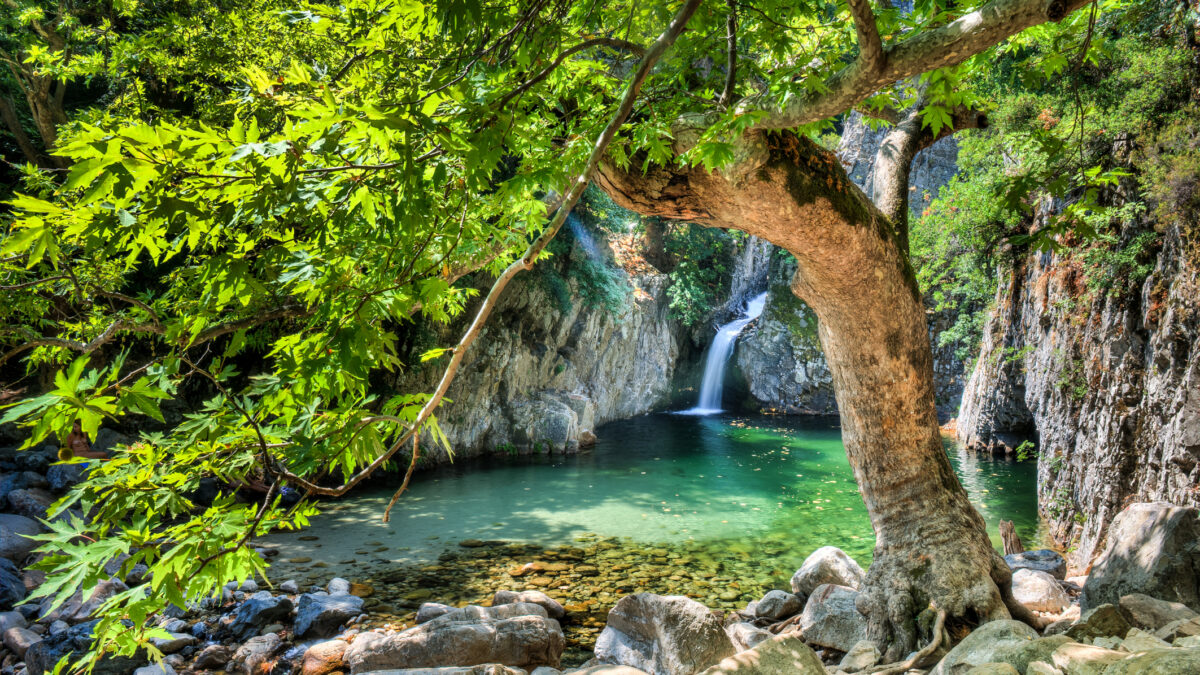Samothraki is an island in the Thracian Sea, neighbouring Limnos, Thasos and Imbros in the Northeastern Aegean. The island’s name, deriving from ‘saos’ (ancient Greek for moon) and a reference to its famous mountain, means moon of Thrace. Samothraki is renowned worldwide for the Winged Victory of Samothrace, a famous sculpture discovered on the island in 1863 and currently on display at the Louvre in Paris. However, Samothraki is also often referred to as the ‘island of mystery’, thanks to the mysteries of the Cabeiri, which were held at the Sanctuary of the Great Gods in Palaiopolis, an ancient city of the island. The Sanctuary is one of the most important archaeological sites on Samothraki and is open to the public. Samothraki was thus both an island of mystery and a place for spiritual renewal, as one of antiquity’s most prominent religious centres. Indeed, in 49 A.D., even the Apostle Paul stayed on the island, his first stop on European soil.
Geographically, Samothraki’s insular landscape is dominated by lush vegetation, running waters, rugged scenery and sheer mountains. Standing at over 1,600 metres above sea level, Mount Saos dominates the island; thanks to it, Samothraki is the Aegean Island with the highest maximum elevation (after Crete and Evia). The locals call Mount Saos ‘Mount Fengari’ – literally Mount Moon – because it is so high it blocks out the moon!
The island’s main town, the amphitheatrical Chora, has been recognised as a listed settlement.
Nowhere is the pristine natural beauty of Samothraki more on display than at the local beaches under the shade of lush wild plane trees, as well as in the other-worldly rocks that rise from the striking blue waters surrounding the island. The island’s most popular beach is Pachia Ammos, though other beaches worth visiting include Therma Loutra, Pyrgos tou Fonia and Kipi.
Cuisine
Samothraki boasts a unique cuisine that goes hand in hand with its striking natural beauty. Chief among the local delicacies is the island’s goat; locals swear by its flavour, attributing it to the sea water the goats drink and the herbs and greens they subsist on. Goat is often served stuffed with rice and offal or prepared according to more traditional Greek recipes – for example, oven-roasted and served with potatoes or cooked in lemon sauce. Honey produced on Samothraki is renowned for its exceptional quality and fine flavour. The island is also home to the Antoniou bakery, whose bread ranks among the island’s top local products. The local Fonias beer, either stout or lager, is yet another product worth tasting and is an excellent accompaniment to meals. As for sweets, lovers of authentic flavours are sure to enjoy the excellent local traditional halva, milk pie (galatopita) and baklava.
How to get there
Samothraki is an island in the Northeastern Aegean and belongs to the Regional Unit of Evros in the Region of Eastern Macedonia and Thrace. To visit the island, you can drive or catch a flight to Alexandroupoli and take the ferry from there to the island’s Kamariotissa port.










